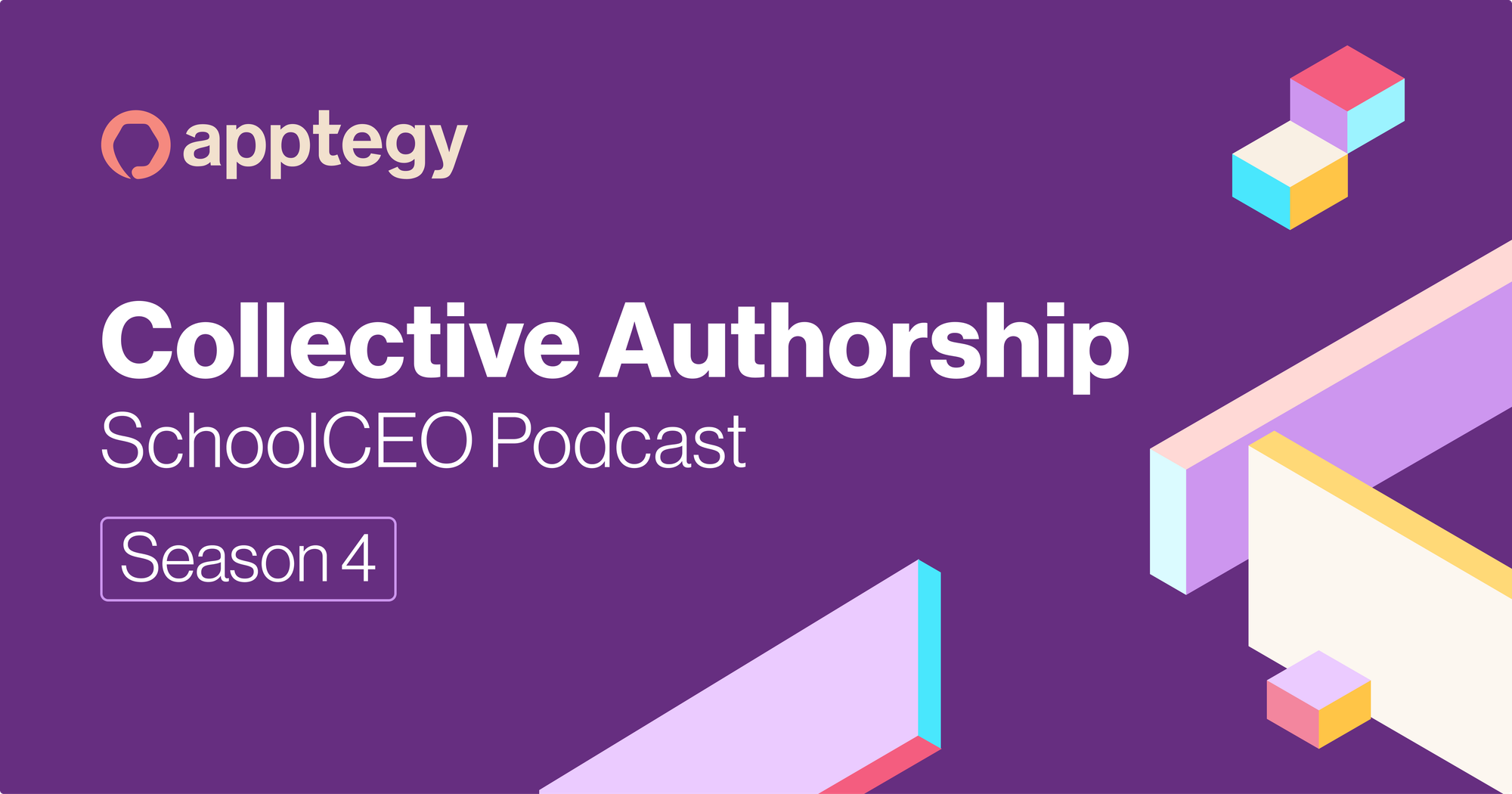Collective Authorship
Today we discuss how to tell more stories in less time.

Show Notes:
Listen to our interview with Saginaw ISD to learn more about Collective Authorship.
Read Who’s Telling Your Story to learn about other storytelling systems for schools.
Sign up for the 2025 SchoolCEO Conference this fall to hear even more great original research!
Subscribe to our newsletter at https://www.schoolceo.com/subscribe-now/.
Visit us at schoolceo.com and connect with SchoolCEO on LinkedIn or X/Twitter @school_ceo.
If you have a story you’d like to share with the SchoolCEO team, email us at eileen@schoolceo.com or schedule a call.
SchoolCEO is powered by Apptegy, the maker of the leading K-12 communications and brand management platform.
Episode Transcript
Eileen Beard: Welcome to the SchoolCEO Podcast. I’m your host, Eileen Beard. In our SWOT analysis of school communications, we discovered small teams are one of the biggest so-called weaknesses that so many districts face. How do you capture and share all of the stories in your district if you’re stretched so thinly? But that leads us to the O in our SWOT analysis. Because what is a weakness if not an OPPORTUNITY for growth. How? This is what it comes down to: If you’re struggling to play ball on a one-woman team, invite more players to the field.
But you don’t have the budget to hire more comms pros. If you did, you would. So how do you get more players on the field? You build a storytelling system that invites other school staff to get involved. There are several systems you can use to do this, but first up, let’s talk about a system called collective authorship.
Saginaw ISD in Michigan is telling its story with the help of hundreds of voices within the district with this powerful framework that can help you and your schools share, celebrate, and communicate the stories of achievement with your stakeholders.
Saginaw encourages every staff member to post to the district website’s Live Feed and social media. Let me repeat that, any and every staff member in the district can post to their website or social media—they only have to watch a 4 minute training video to become so-called certified authors for the district. Then, using an app designed by Apptegy, they can post to all of the district’s accounts via a central location. No need to log into Facebook and Instagram and Twitter separately and craft the same post 3 times in a row.
Not only does this increase the number of stories Saginaw shares, it varies the types of stories they can tell—after all, most districts employ hundreds if not thousands of people—from bus drivers to custodians to teachers—and no two perspectives are the same. That’s good for staff morale, too. Collective authorship shows your staff you trust them and that you value all of their perspectives. And what all of these contributing voices avoids is too much polish: your audience can see through inauthenticity.
But don’t worry, Saginaw ISD does have a safeguard in place: all posts are moderated by the communications team to ensure the content is accurate, appropriate and aligned with the organization’s values.
Even with moderation, collective authorship saves comms a lot of time. Because as a writer and editor myself, let me tell you—sourcing and crafting stories takes far longer than proofreading them. What could you do with all that extra time?
To learn more about collective authorship, listen to SchoolCEO’s full interview with Jeffrey Collier and Coty Kuschinsky, the Superintendent and Chief of Staff at Saginaw ISD. I’ve included a link to the interview in the show notes.
Thank you for joining me.

